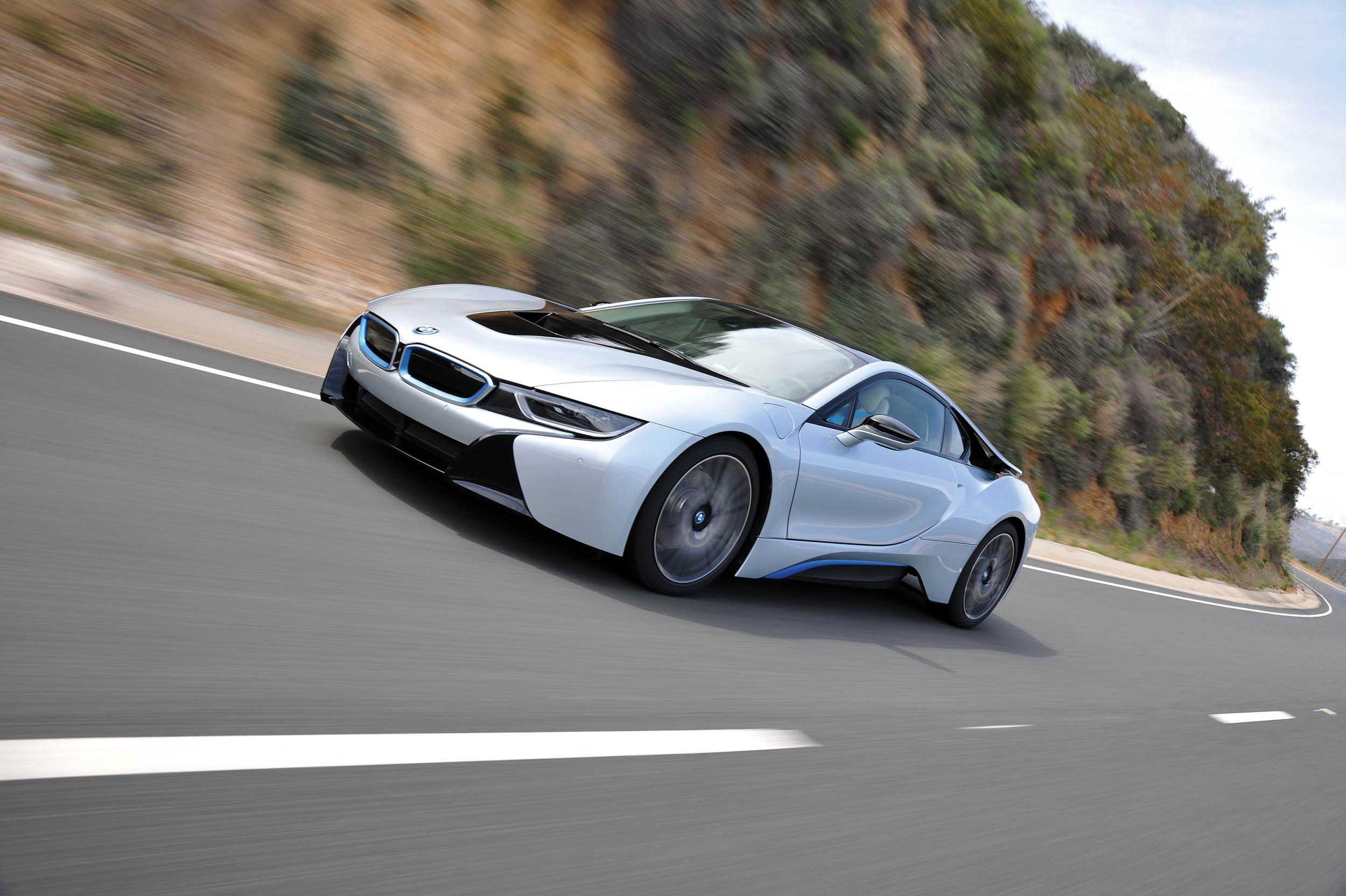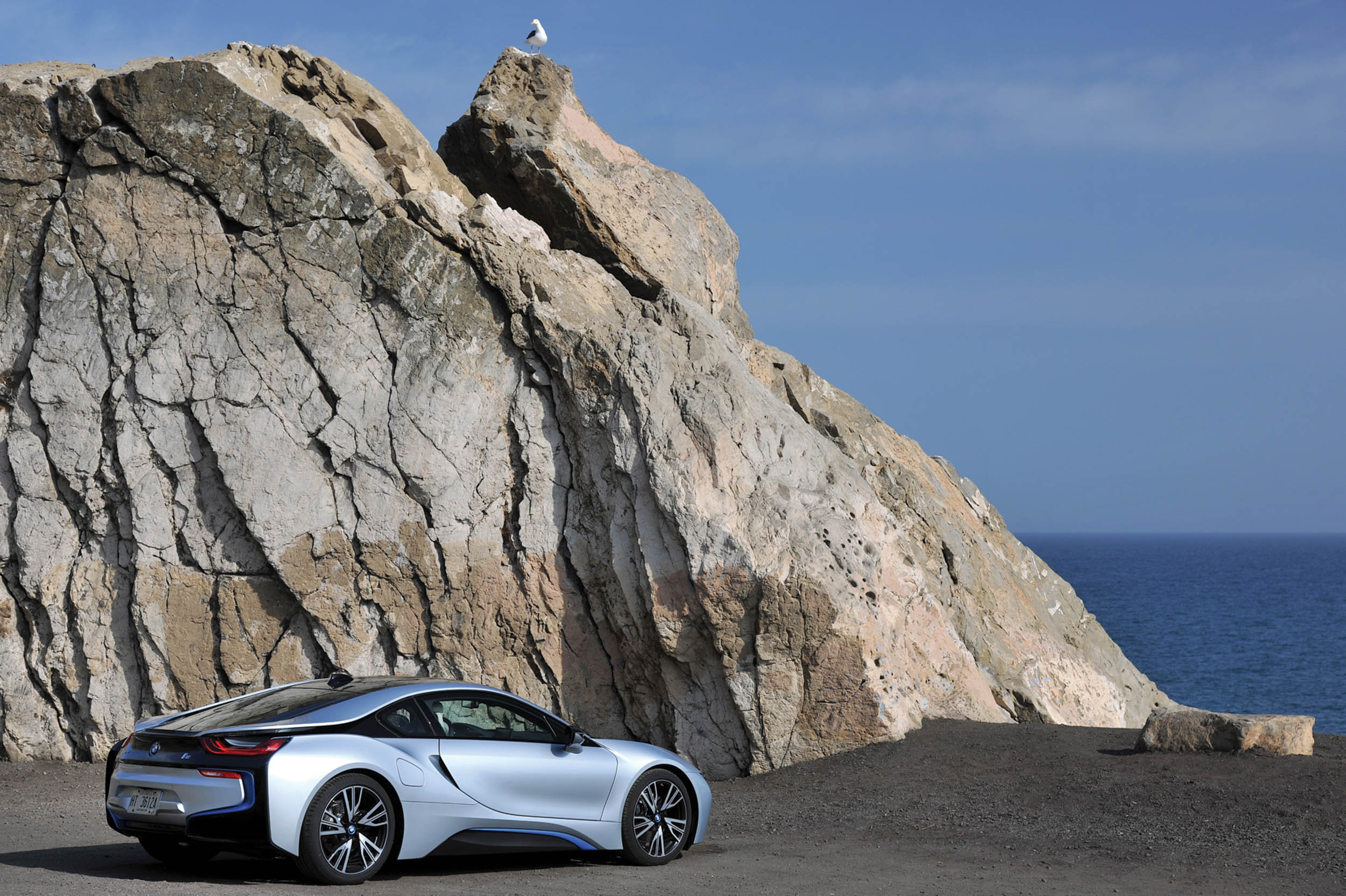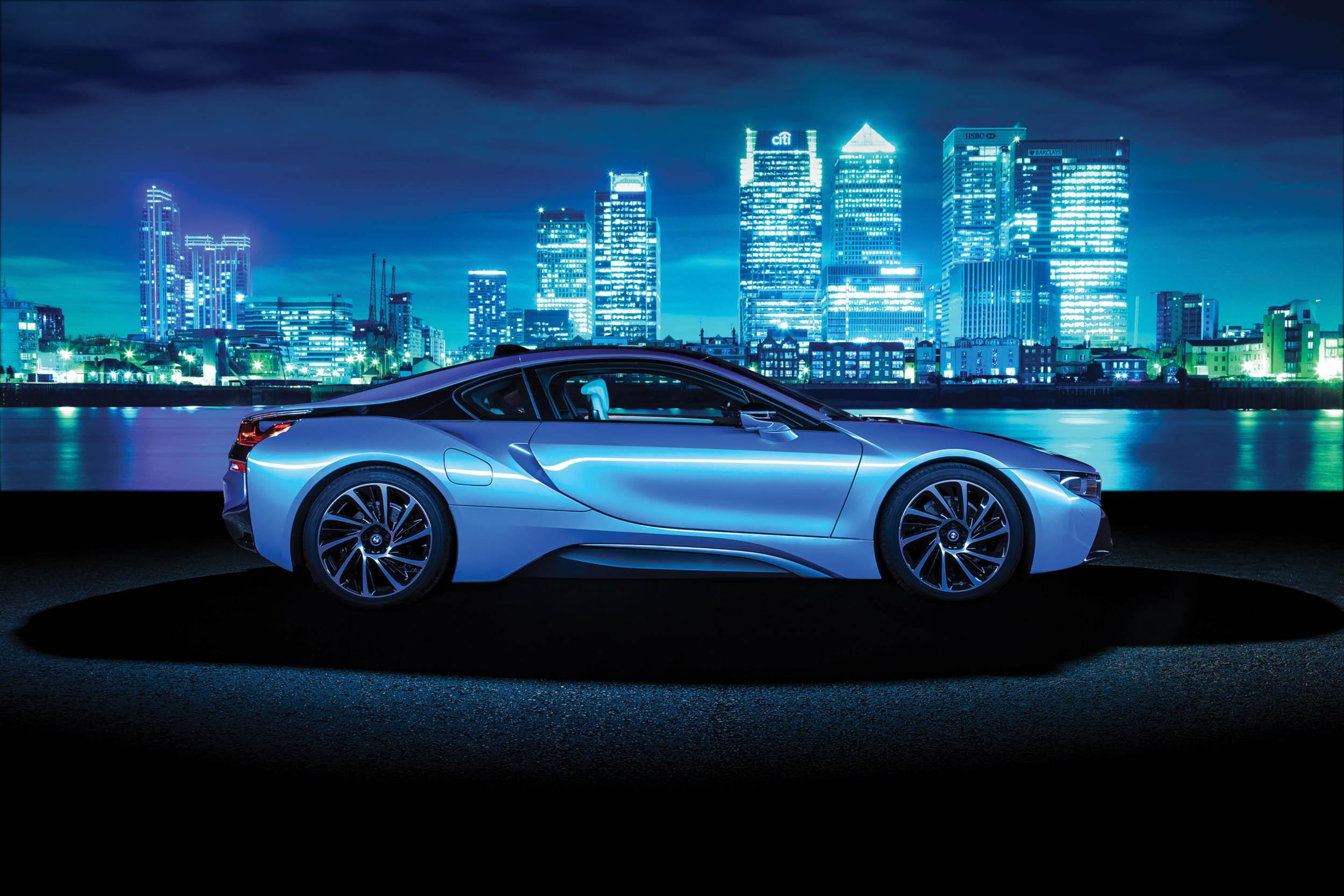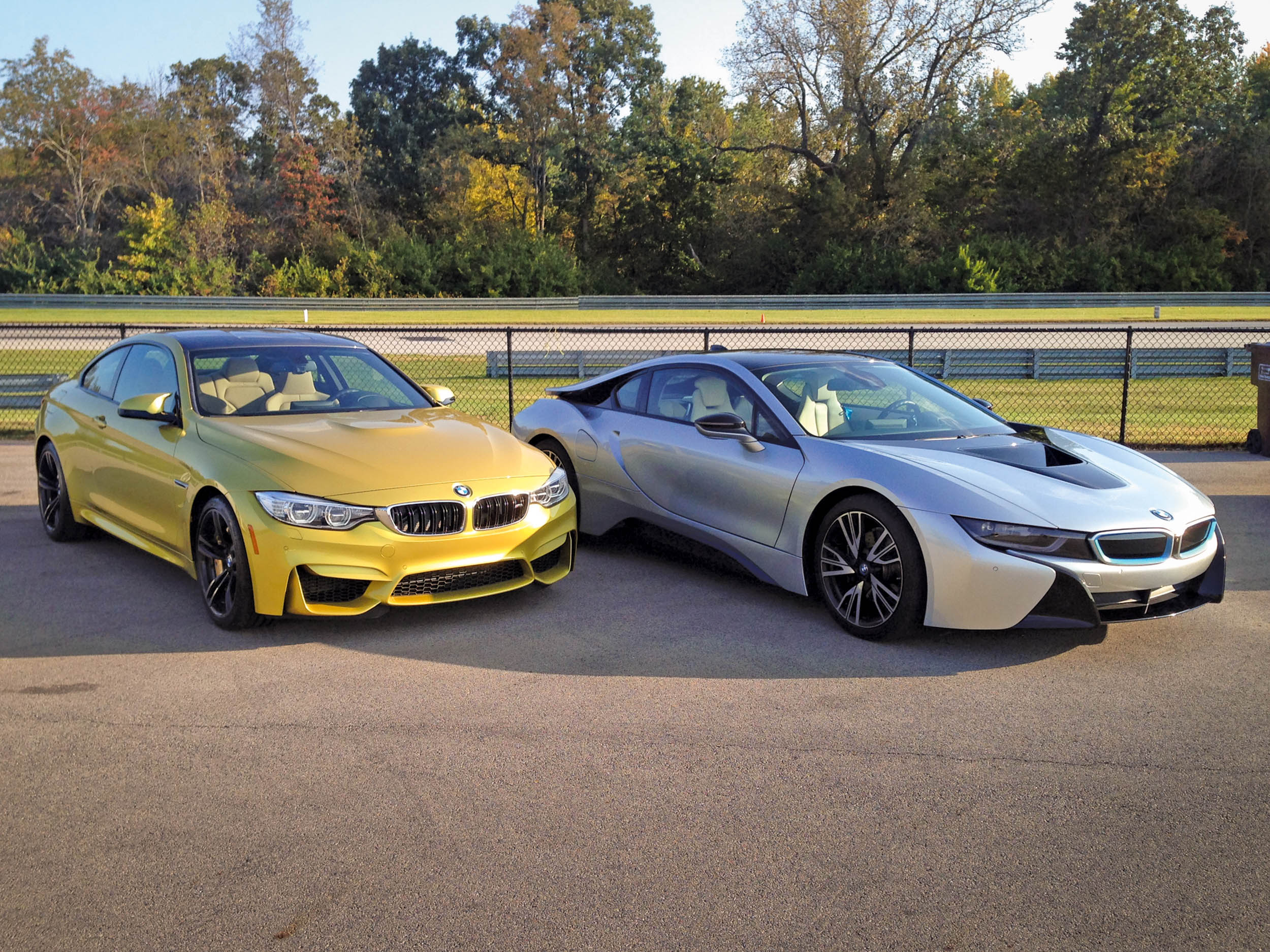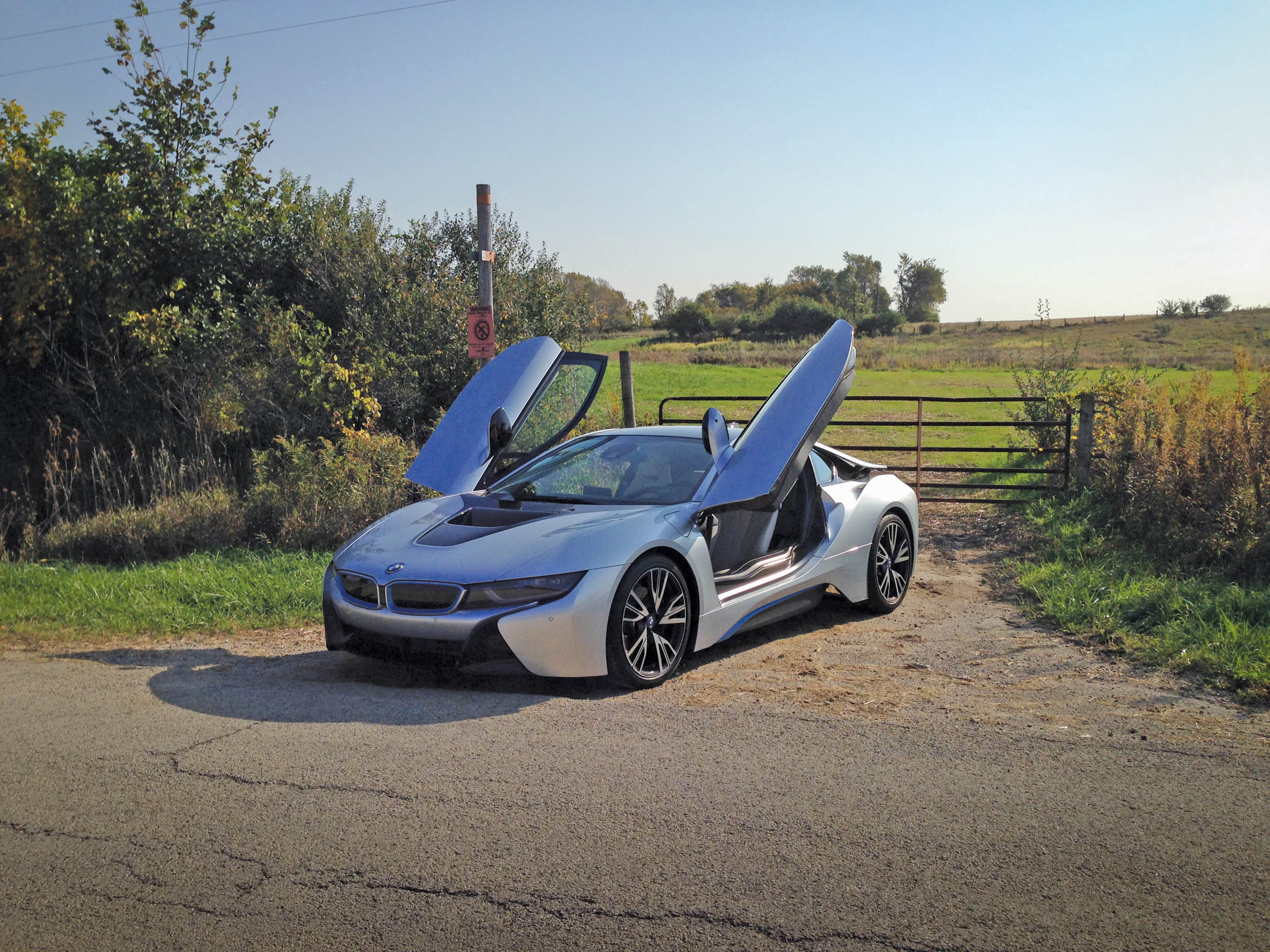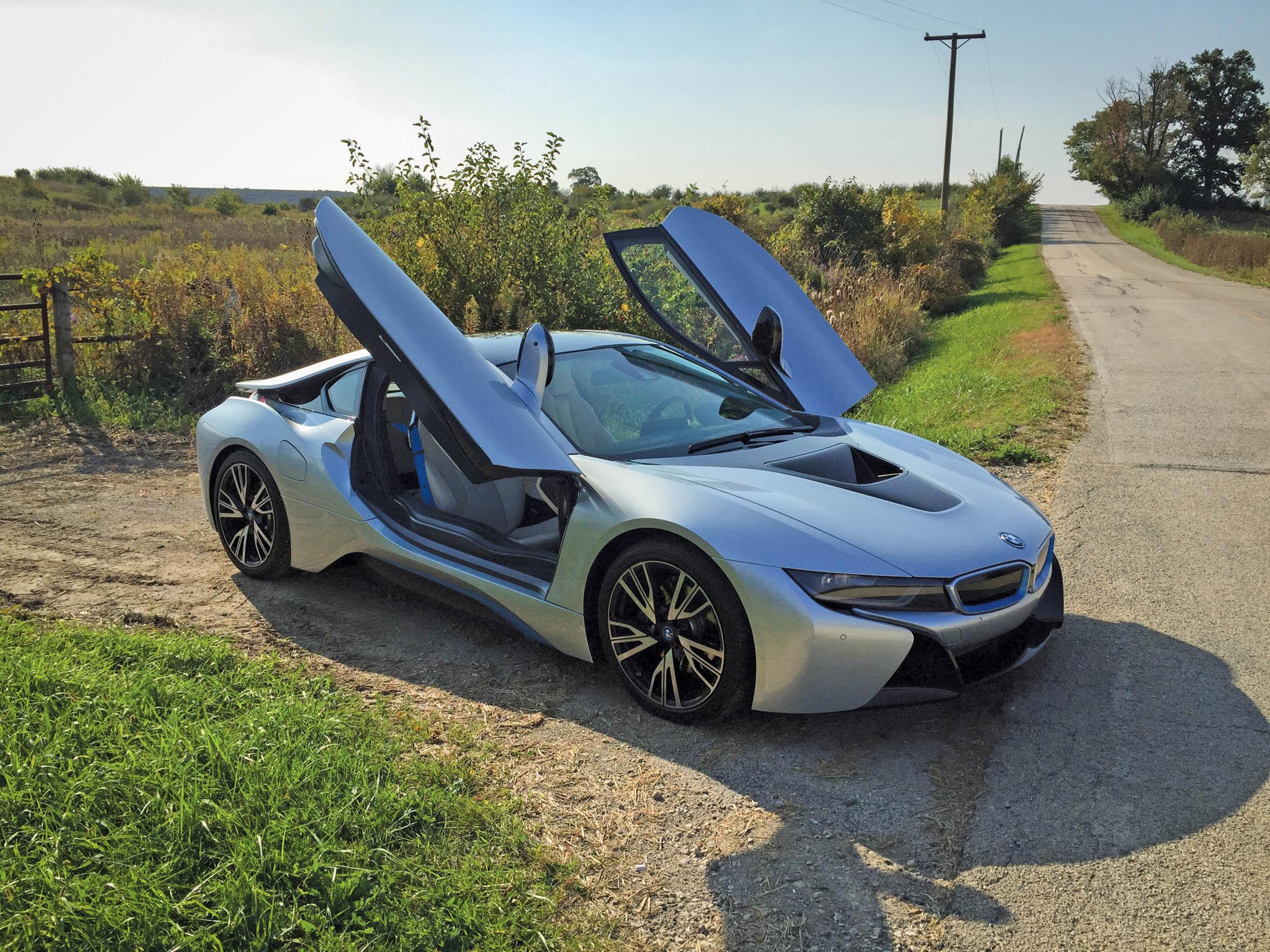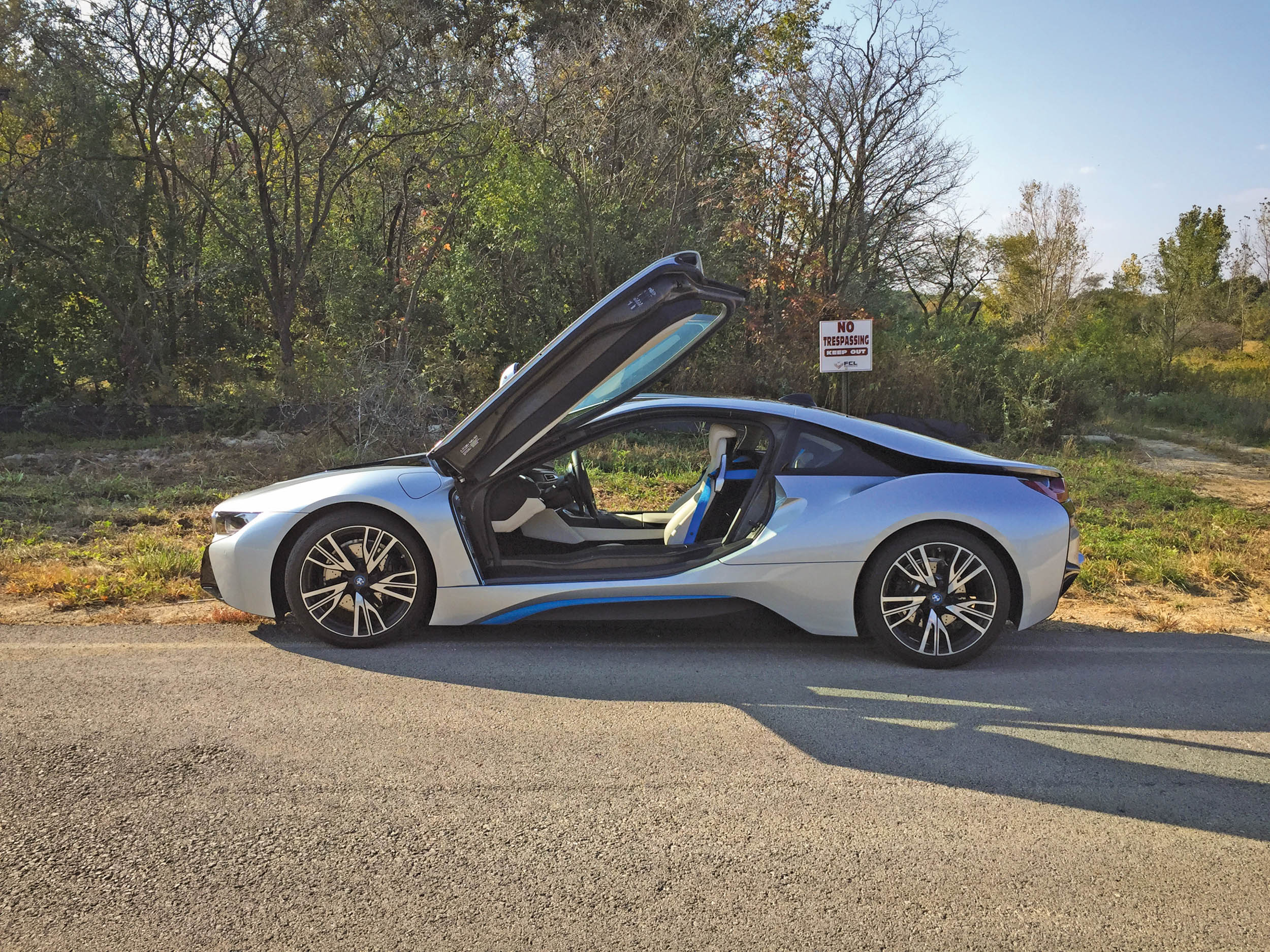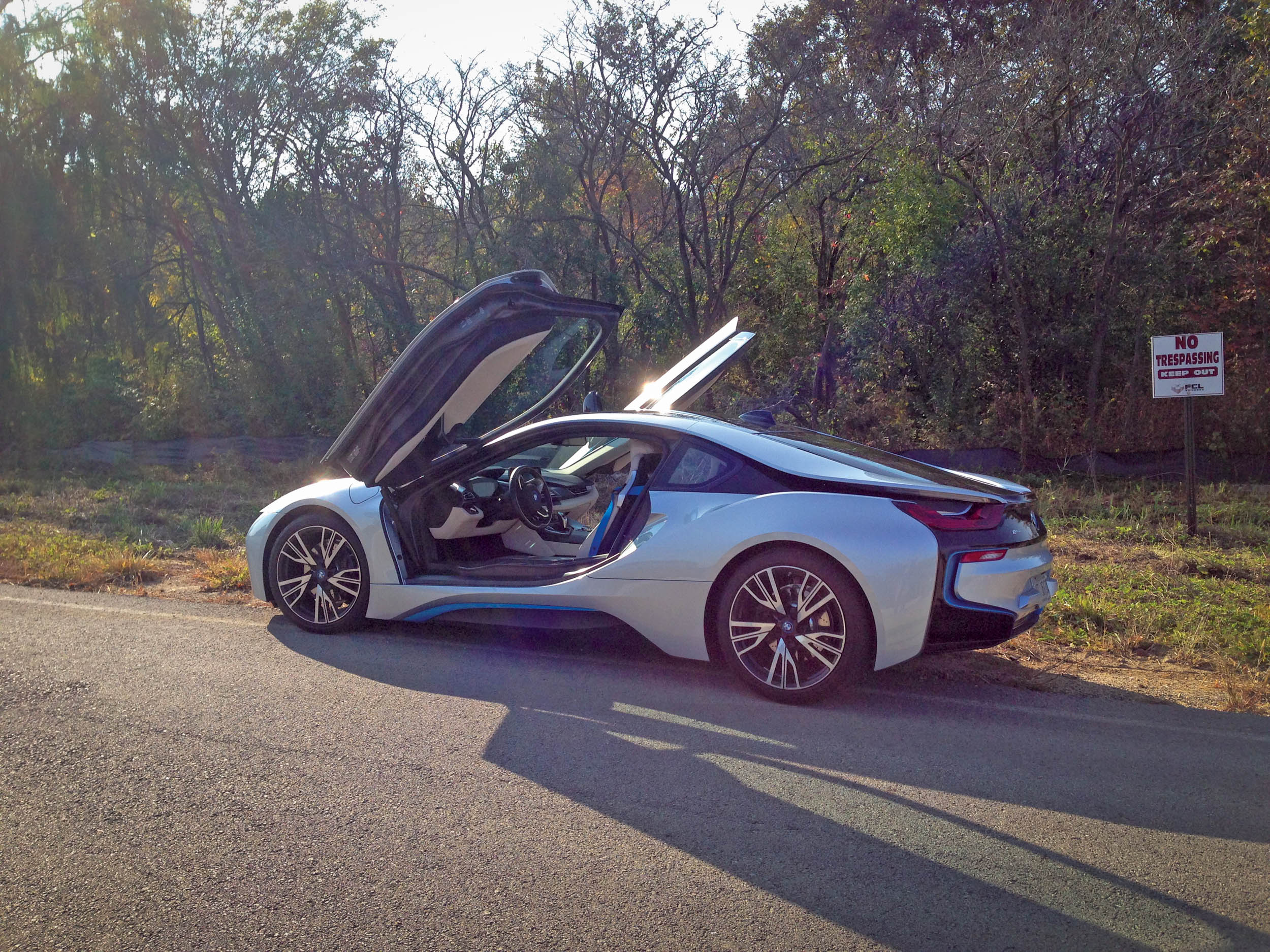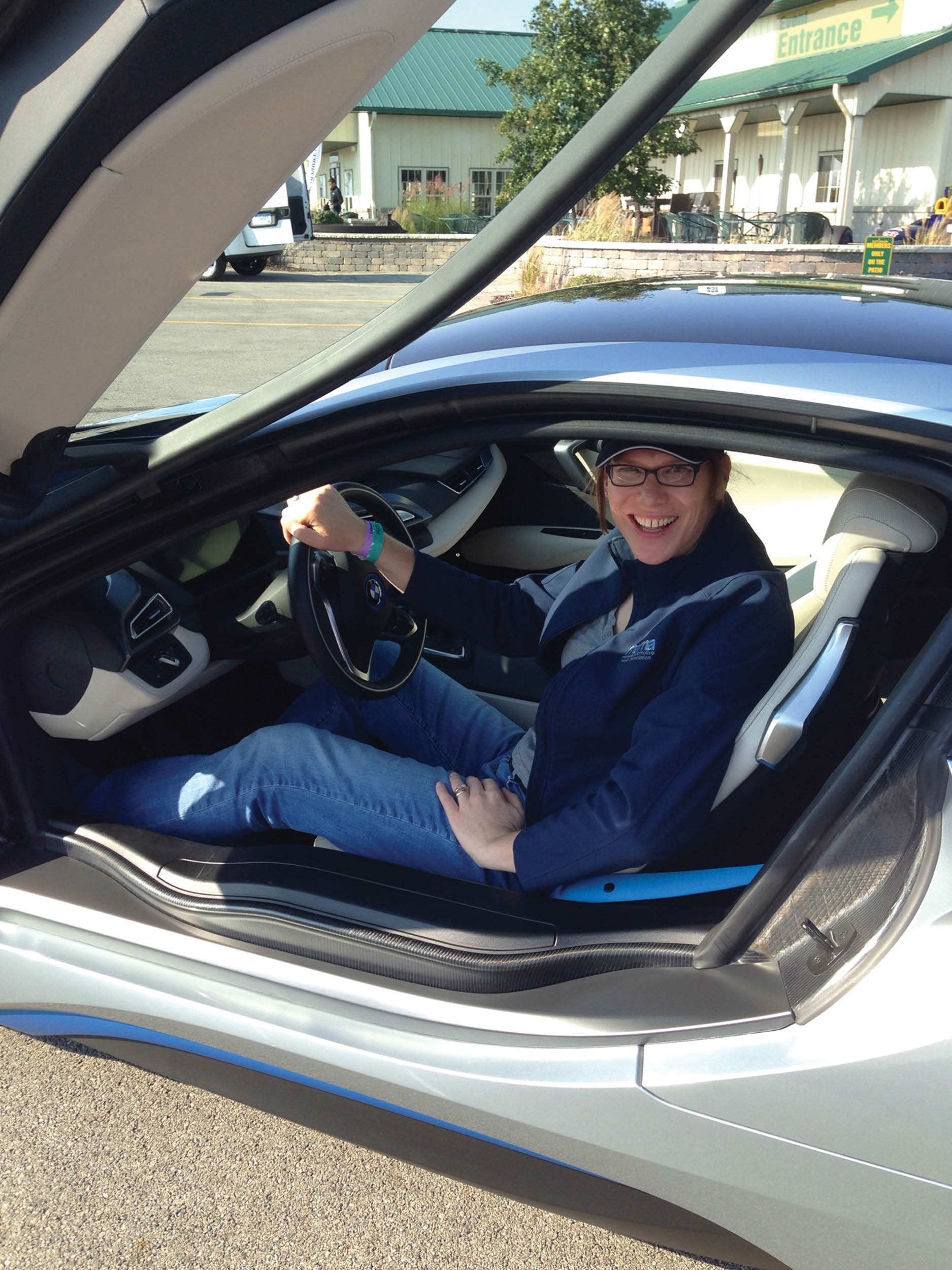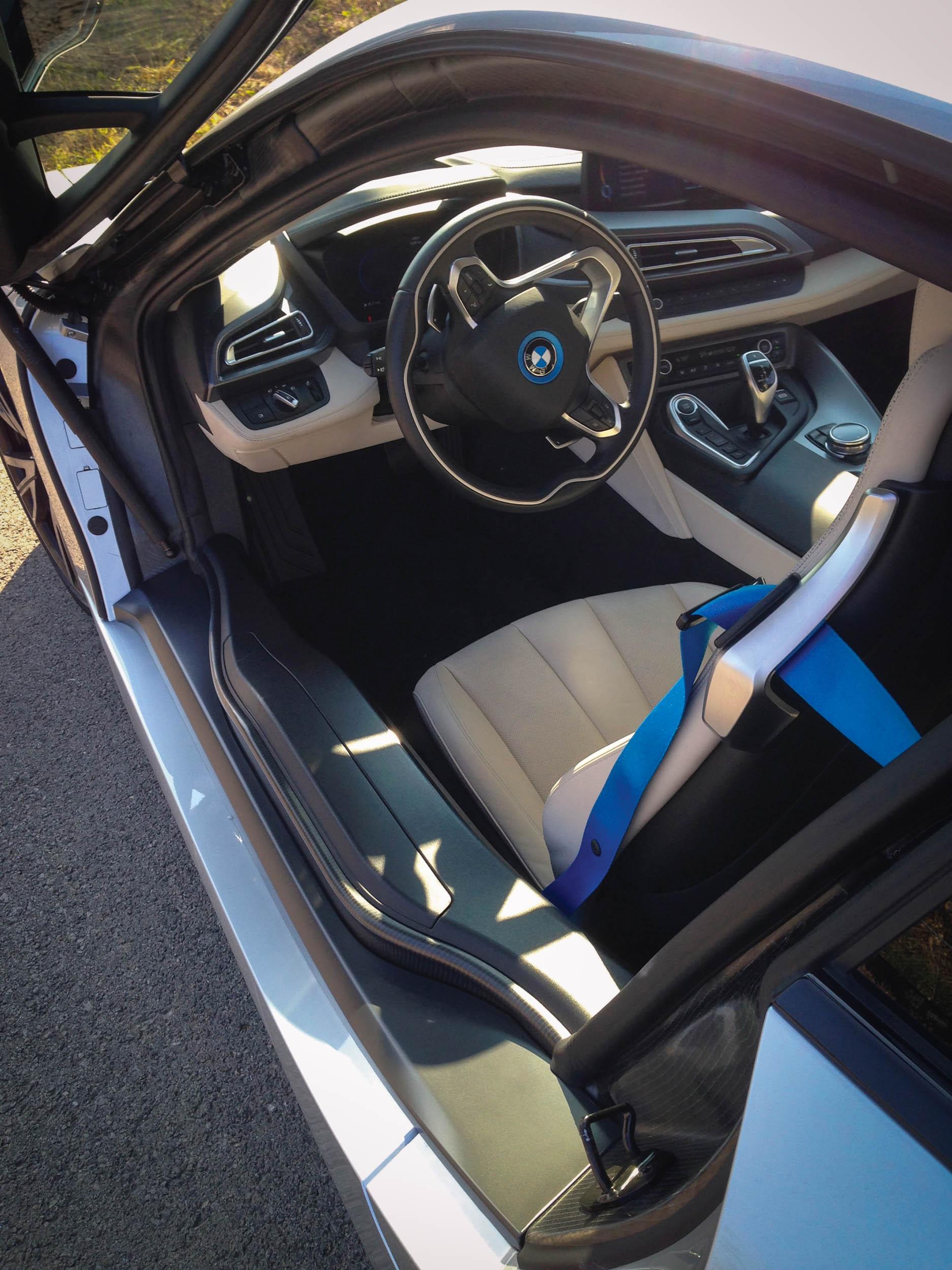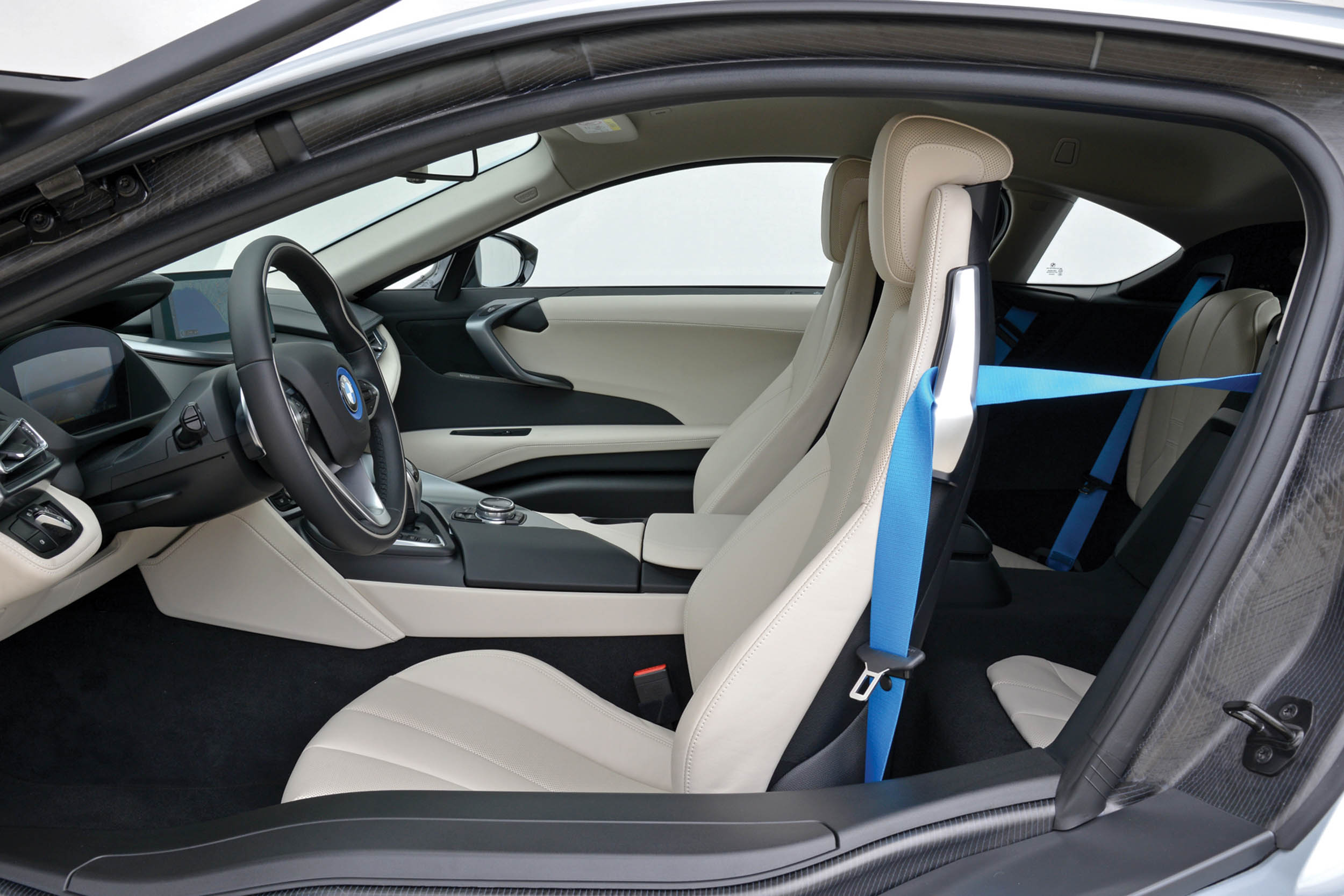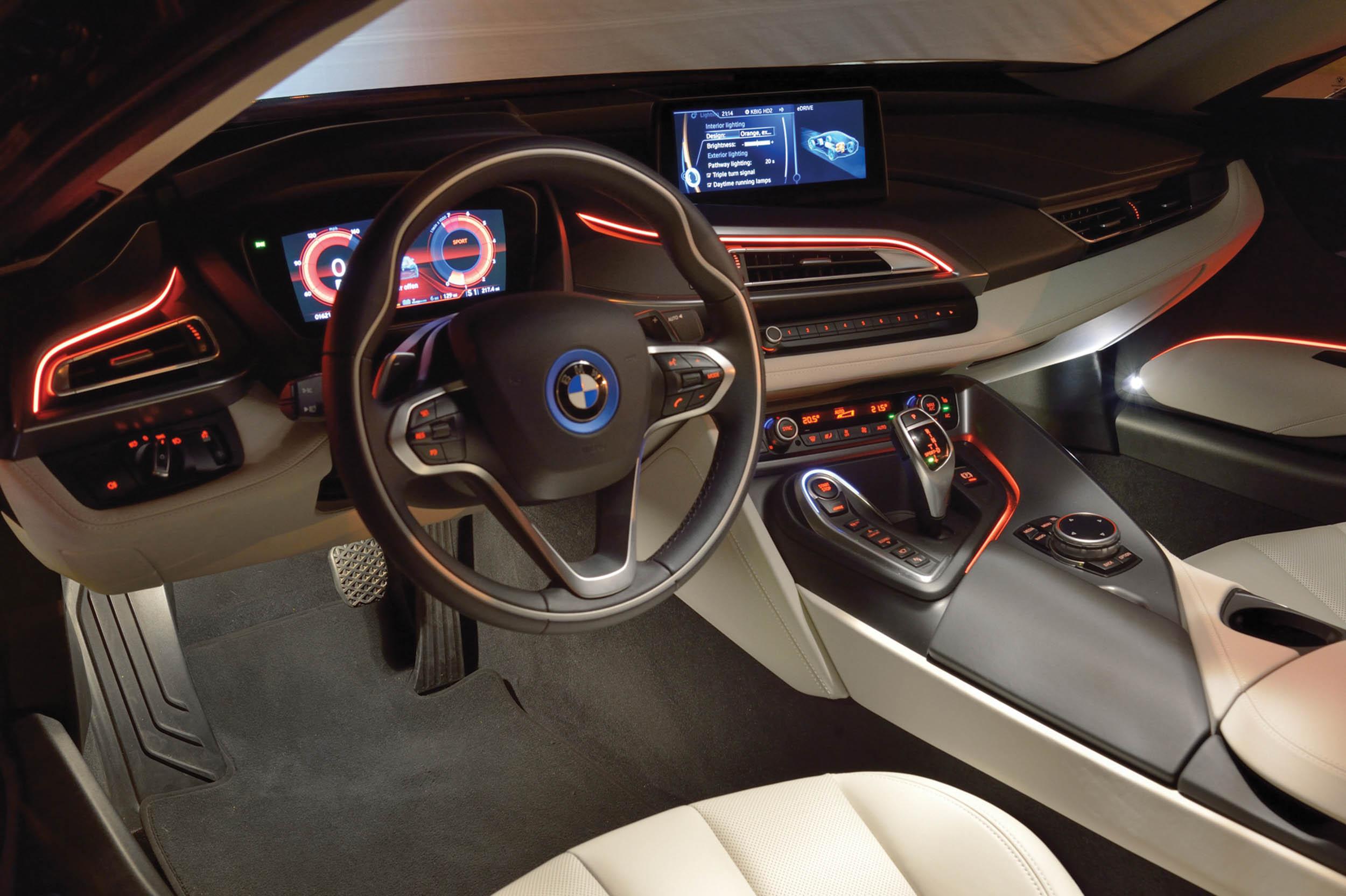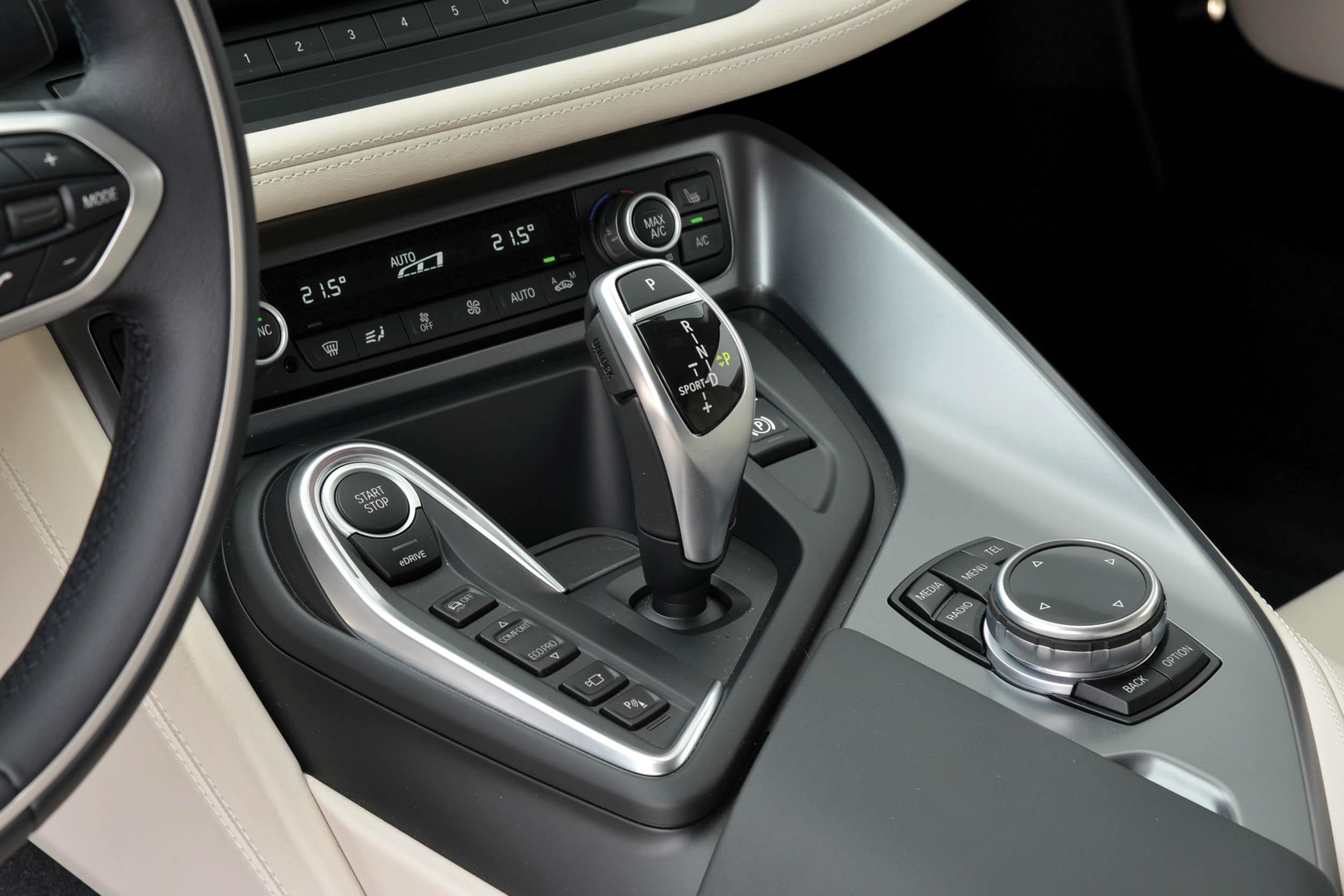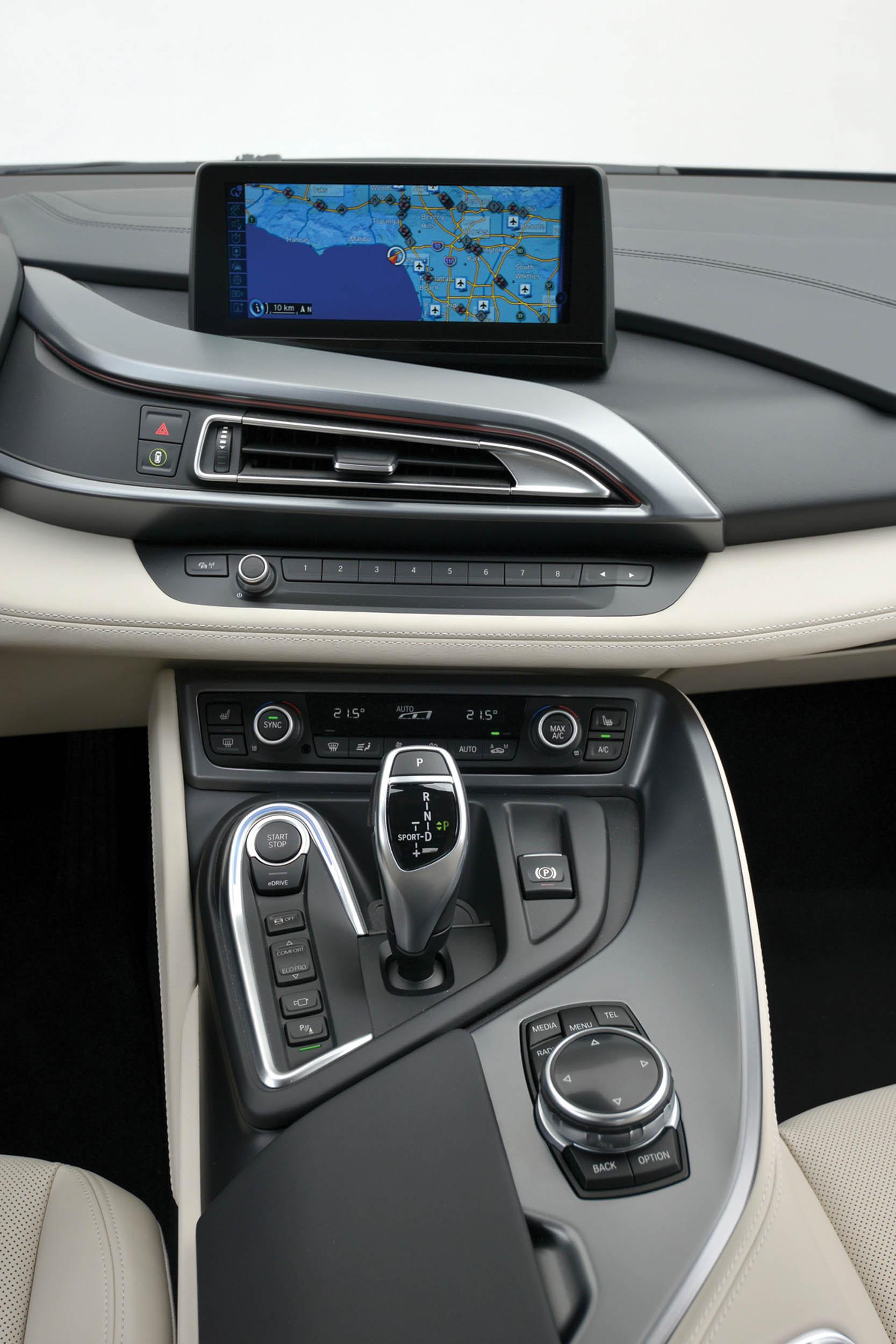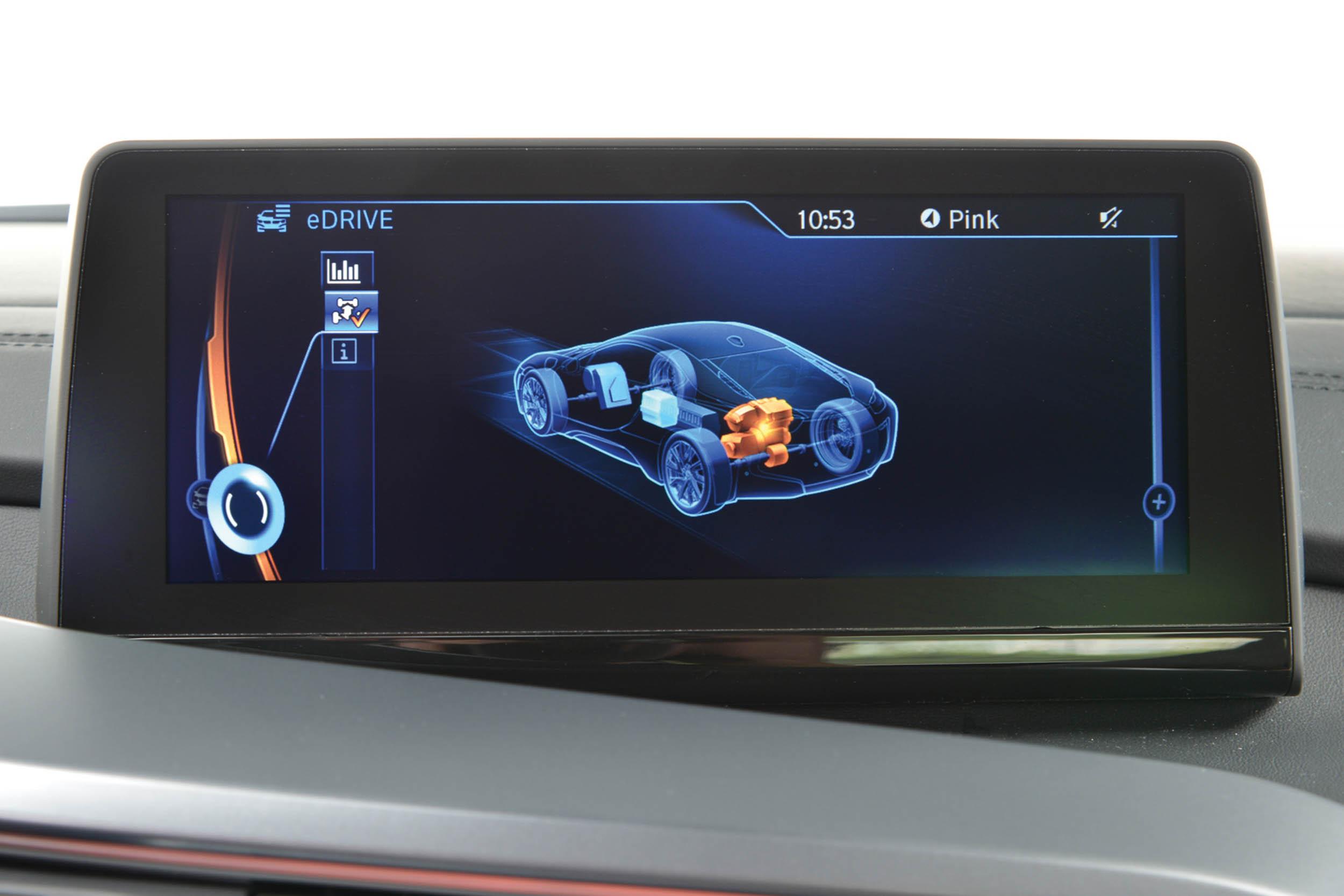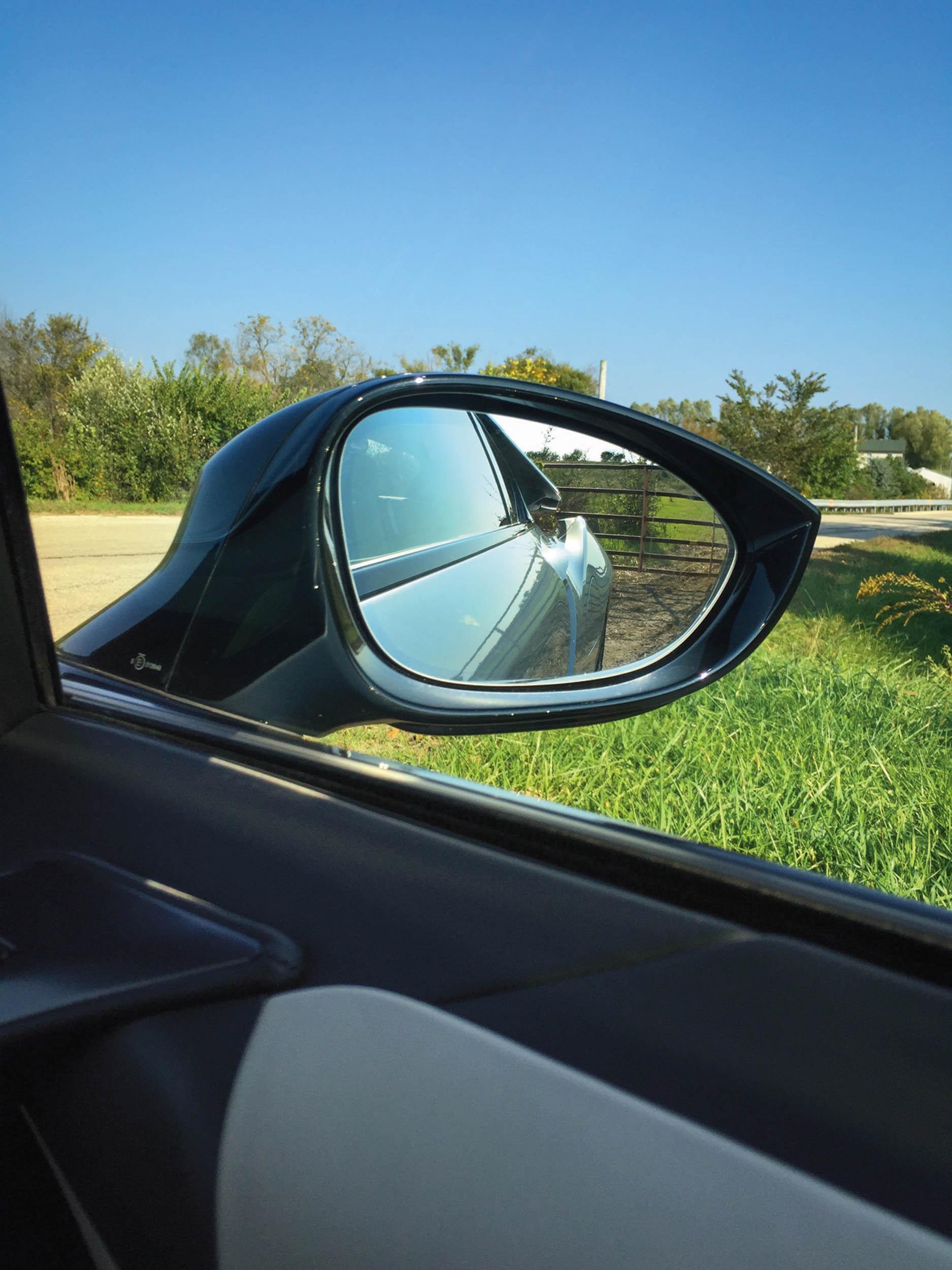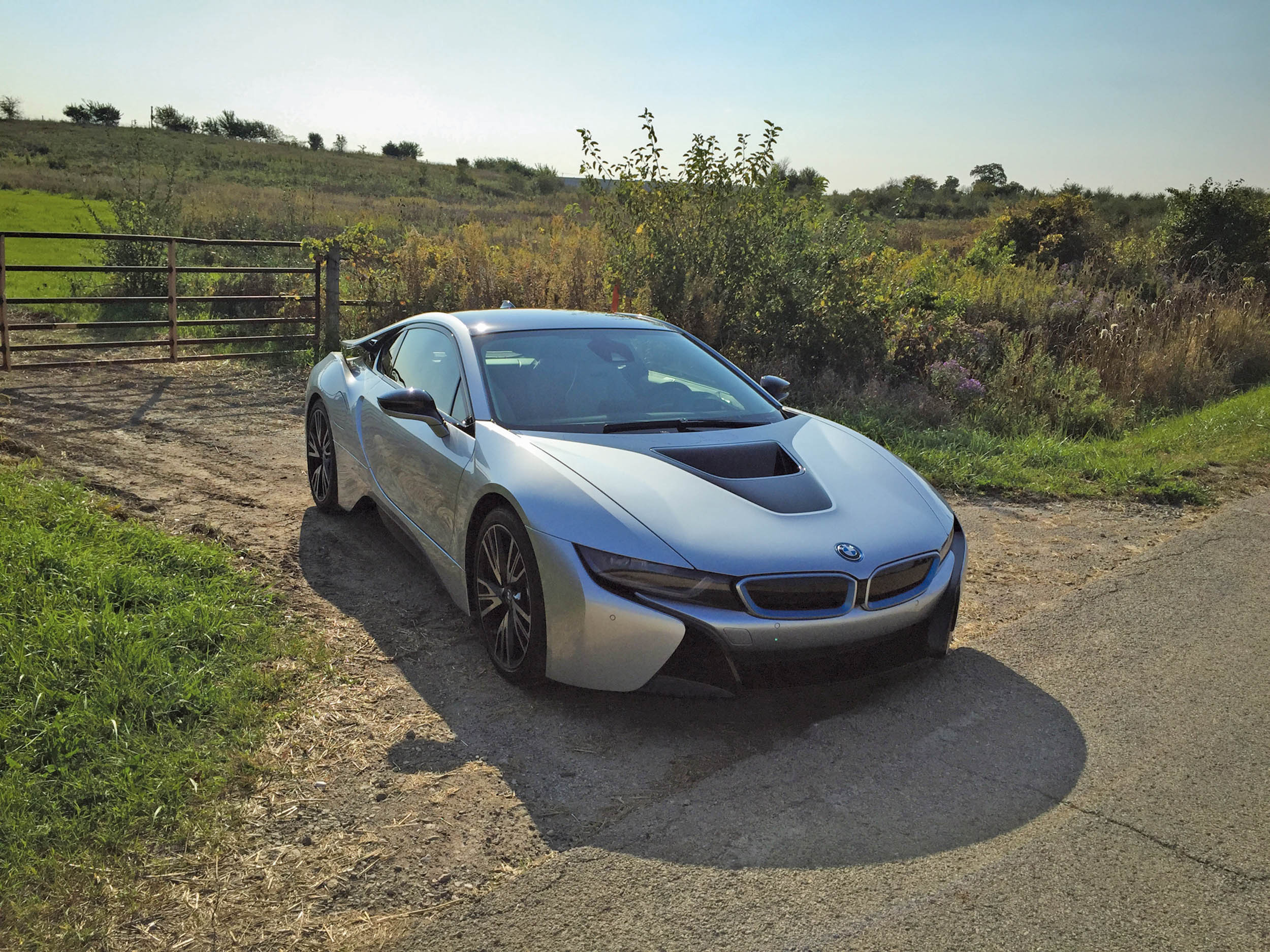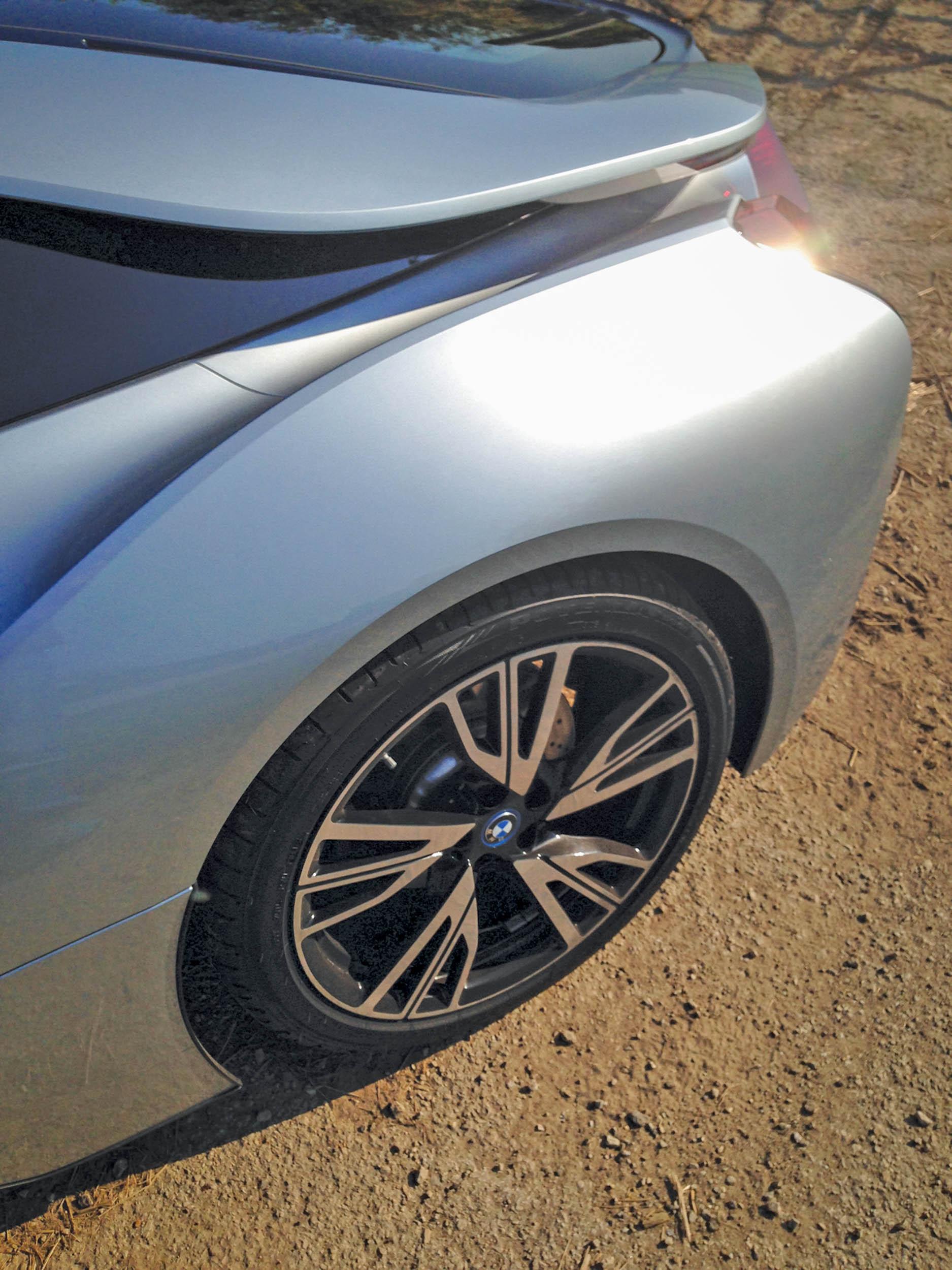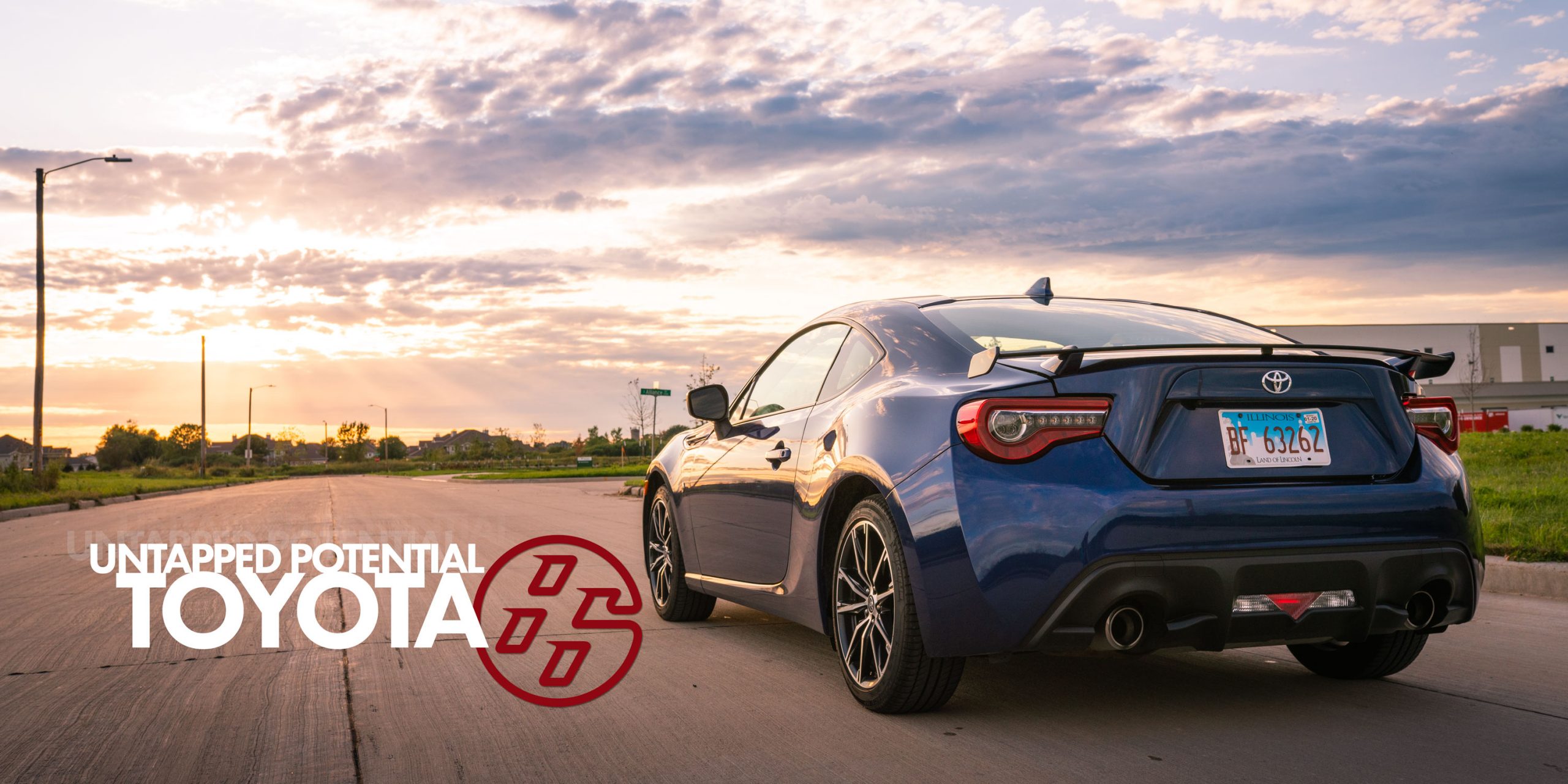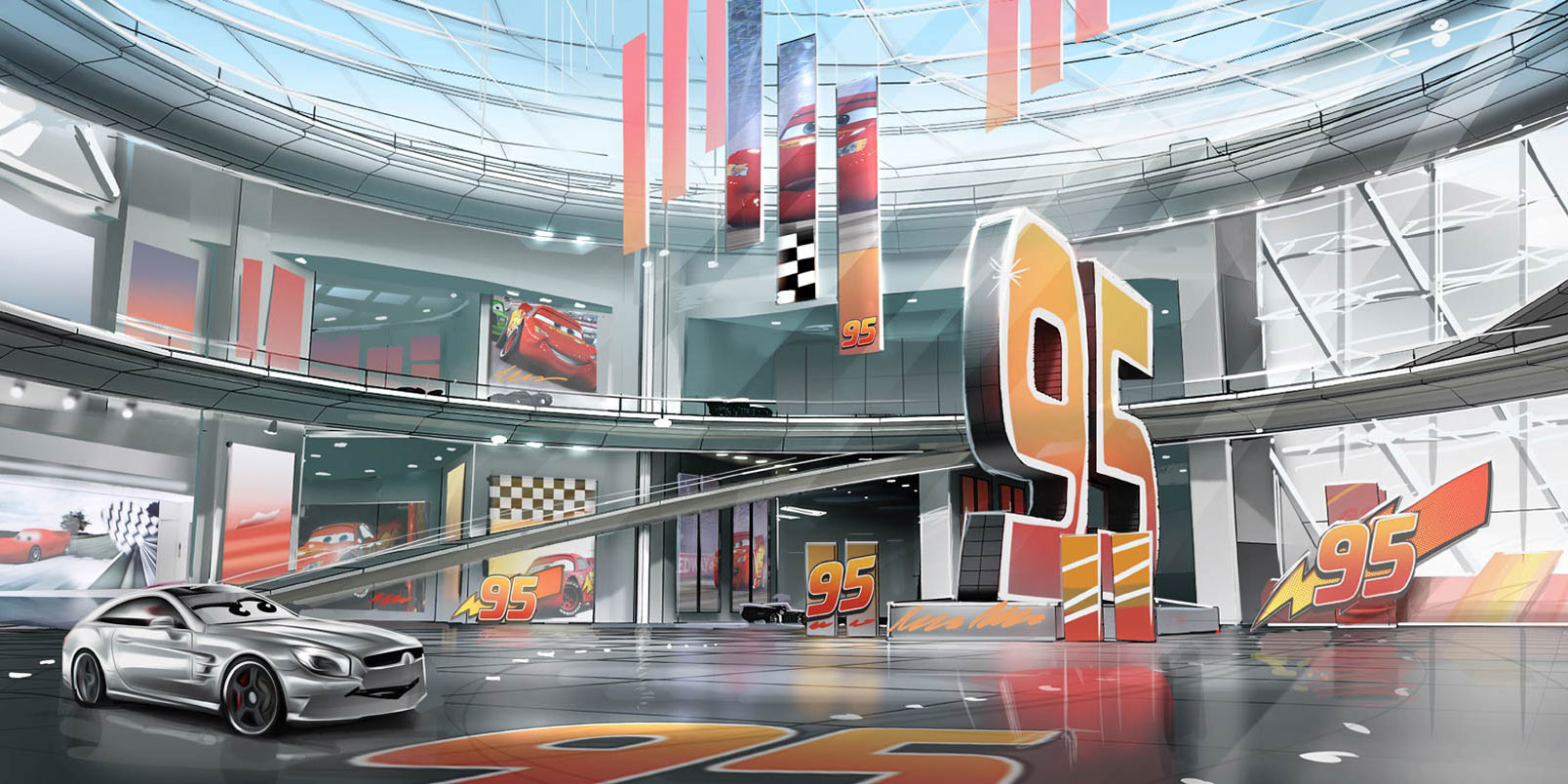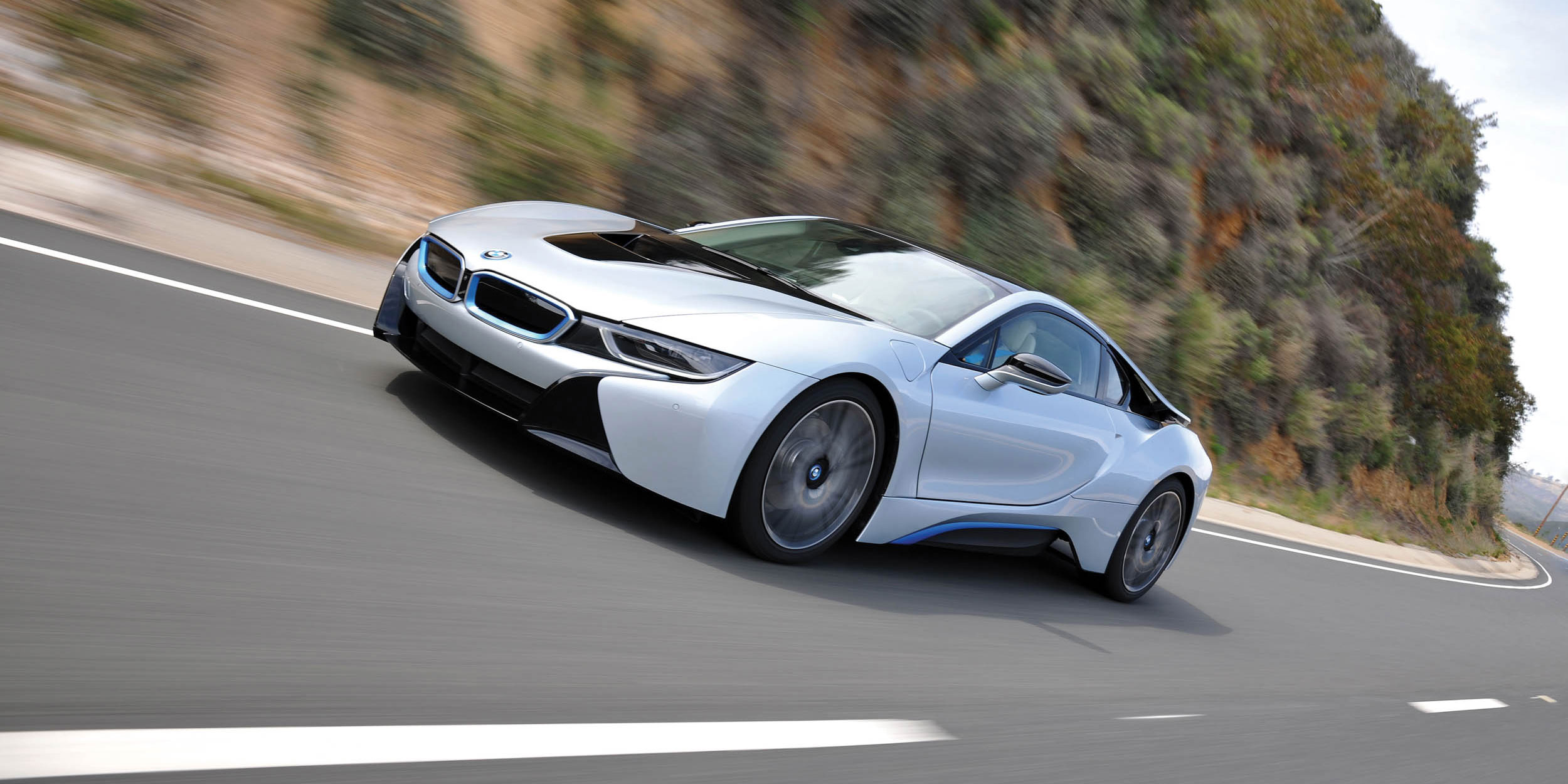
Words and Photos by Jennifer Jensen
Some cars defy easy classification. BMW has referred to its i8 as “the most progressive sports car of our time,” extending “sustainability to a new vehicle segment.”
BMW North America president and CEO Ludwig Willisch has said the i8 “will compete with supercars with its looks and driving performance.”
At the same time, BMW claims this plug-in hybrid will be able to drive as far as 22 miles on electric power alone and achieve about 95 mpg—at least on the European test cycle, which provides an advantage to the electric side of the ledger (as does the EPA test).
Our admittedly spit-balled estimates—there really isn’t a commensurate plug-in for which we have data—for real-world combined-system driving are 40 mpg city and 45 mpg highway.
EXOTIC EYE CANDY
The BMW i8 is visually exotic. Two inches longer, 4.6 inches wider and 3.3 inches lower than a 4-series coupe, the i8 has the proportions of a mid-engine car, which it is—at least when you’re referring to the gas-drinking portion of its powertrain.
The body has scissor doors and sports several flamboyant aerodynamic flourishes, including flat tunnels formed by the vertically extended rear fenders and lateral extensions of the C-pillars, underbody air intakes at the rear end of the side sills, bladelike ends on the rear fenders and a radiator exhaust in the middle of the hood.
Finished in gleaming paint — most likely two-toned to highlight its layered design language — the i8 is a stunner.
Pop open the portals, and you first notice a high sill that combines with the overhead door to make entry a bit tougher than in a conventional car. Once inside, the cockpit is roomy and extremely well finished, with a layered design theme that matches the exterior.
There’s a rear seat, but it’s a very tight fit for adults—think Porsche 911.
QUICK & CLEAR MOTIVATION
When you press the start button, the car goes into its default Comfort mode. If the battery is charged, you will start running under electric power, which is provided by a 129-horsepower motor powering the front wheels. It siphons power from a 6.0-kWh lithium-ion battery that’s located in the central tunnel within an aluminum structure.
In this mode, the car is smooth, and it’s quiet and sprightly enough to keep up with normal traffic. Subjectively, it feels about as quick as a Chevy Volt.
Step into the accelerator a little farther, and the transverse, mid-mounted turbo 3-cylinder bursts to life with a growl. With its 228 ponies added to the mix, the 3300-pound i8 moves out smartly.
BMW claims a 0-to-60 time of fewer than 4.5 seconds; with the gas engine making satisfyingly guttural sounds, the i8 feels every bit as quick as that, and we’re estimating a time of 4.3.
You don’t have to do any shifting, as the i8 is equipped with two automatic transmissions. There’s a two-speed gearbox for the electric motor to provide plenty of thrust in electric-only mode, which tops out at 75 mph.
At higher speeds, the gas engine engages and the electric motor shifts into high gear to help it contribute to performance up to the 155-mph top speed.
The 1.5-liter 3-cylinder is coupled to an Aisin 6-speed automatic borrowed from the Mini line. It’s beefed up to cope with the more powerful engine and gets a wider spread of ratios to better match the i8’s need for efficiency and performance.
All of this sounds like a lot of mechanical monkey motion, but it is essentially seamless in practice. The operation of the electric motor’s transmission is completely unnoticeable, and the 6-speed coupled to the gas engine shifts as smoothly as any other automatic.
The latter’s programming can be overridden by using the paddles on the steering column and engaging the gearbox’s Sport mode.
PERFECTLY PROPORTIONED
Clearly, there’s a lot of tech and hardware packed into the i8, yet the estimated 3,300-pound curb weight is about 250 less than that of a 435i coupe.
The weight saving comes from extensive use of lightweight materials. The central tub of the car is constructed of carbon fiber; it uses fiber and cloth produced by a BMW/Boeing joint venture and is molded with BMW’s proprietary process.
The front and rear subframes are aluminum, as is most of the running gear. Where feasible, these aluminum parts are drilled to shave further ounces. Even the window between the cabin and engine compartment is made of Gorilla Glass—the super-strong stuff that’s probably in your smartphone—so that it could be as thin as possible.
Properly locating weight is as important as saving it, and BMW has attempted to place the pounds as low as possible. Consequently, the i8’s center of gravity is lower than any other BMW’s, according to project director Carsten Breitfeld.
He says the i8 also has a perfect 50-50 front-to-rear weight distribution.
RIDE AND HANDLING
As we were led through the various handling tracks at BMW’s Miramas testing facility in southern France, the absence of body roll was clear. Although the suspension delivered a supple ride, the i8 leaned remarkably little, even when we pushed hard enough for stability control to assert itself.
The car feels agile and responsive, but it’s not blessed with an abundance of grip.
You can attribute some of that to its Bridgestone Potenza tires, which are neither particularly wide nor sticky. Those fitted to our car were the optional tires—the standard ones are narrower and optimized even more toward low rolling resistance.
The i8’s steering is precise and well weighted but lacks much feedback or feel, at least in the prototype. We’ve come to expect this from electric power steering, and at parking-lot speeds, it felt particularly like a video-game controller.
When you select the i8’s Sport mode, the steering and the suspension become firmer, and both powertrains are used to maximize performance.
The driving thrust shifts from front- to rear- to all-wheel drive as needed to improve cornering agility. We barely felt these shifts taking place and look forward to exploring this aspect of the i8 in a more thorough test drive.
One problem with many electric vehicles is inconsistent brake feel caused by the blending of regenerative and friction braking.
On the i8, you get about 40% of the regenerative braking by simply lifting off the accelerator. The rest comes in the first part of brake-pedal travel, which is a little soft before firming when the friction brakes are engaged.
It’s not perfectly smooth, but there are many cars with conventional brakes that don’t feel as good.
IN SUM
The BMW i8 packs a tremendous amount of technology into its compact size. Not only does it employ expensive materials for weight saving, but the electric powertrain pieces are also low volume, as is the i8’s unique platform.
Exotic-looking but not really exotic-driving make this car a $125,000 quandary.
Originally published in 2015.
